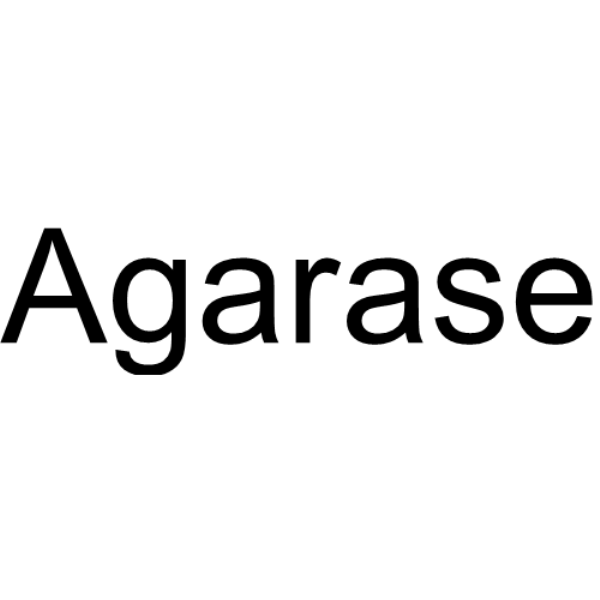Native Pseudomonas atlantica Agarase

Native Pseudomonas atlantica Agarase structure
|
Common Name | Native Pseudomonas atlantica Agarase | ||
|---|---|---|---|---|
| CAS Number | 37288-57-6 | Molecular Weight | N/A | |
| Density | N/A | Boiling Point | N/A | |
| Molecular Formula | N/A | Melting Point | N/A | |
| MSDS | Chinese USA | Flash Point | N/A | |
|
Substrate recognition and hydrolysis by a family 50 exo-β-agarase, Aga50D, from the marine bacterium Saccharophagus degradans.
J. Biol. Chem. 288(39) , 28078-88, (2013) The bacteria that metabolize agarose use multiple enzymes of complementary specificities to hydrolyze the glycosidic linkages in agarose, a linear polymer comprising the repeating disaccharide subunit of neoagarobiose (3,6-anhydro-l-galactose-α-(1,3)-d-galact... |
|
|
An extra peptide within the catalytic module of a β-agarase affects the agarose degradation pattern.
J. Biol. Chem. 288(13) , 9519-31, (2013) Agarase hydrolyzes agarose into a series of oligosaccharides with repeating disaccharide units. The glycoside hydrolase (GH) module of agarase is known to be responsible for its catalytic activity. However, variations in the composition of the GH module and i... |
|
|
Agar degradation by microorganisms and agar-degrading enzymes.
Appl. Microbiol. Biotechnol. 94(4) , 917-30, (2012) Agar is a mixture of heterogeneous galactans, mainly composed of 3,6-anhydro-L-galactoses (or L-galactose-6-sulfates) D-galactoses and L-galactoses (routinely in the forms of 3,6-anhydro-L-galactoses or L-galactose-6-sulfates) alternately linked by β-(1,4) an... |
|
|
Rhodococcus sp. Q5, a novel agarolytic bacterium isolated from printing and dyeing wastewater.
Folia Microbiol. (Praha) 57(5) , 379-86, (2012) An agar-degrading bacterium, Rhodococcus sp. Q5, was isolated from printing and dyeing wastewater using a mineral salts agar plate containing agar as the sole carbon source. The bacterium grew from pH 4.0 to 9.0, from 15 to 35°C, and in NaCl concentrations of... |
|
|
Cloning, expression, and characterization of a glycoside hydrolase family 118 beta-agarase from Agarivorans sp. JA-1.
J. Microbiol. Biotechnol. 22(12) , 1692-7, (2012) We report a glycoside hydrolase (GH)-118 beta-agarase from a strain of Agarivorans, in which we previously reported recombinant expression and characterization of the GH- 50 beta-agarase. The GH comprised an open reading frame of 1,437 base pairs, which encod... |
|
|
Identification of a novel agarolytic γ -Proteobacterium Microbulbifer maritimus and characterization of its agarase.
J. Basic Microbiol. 52(6) , 705-12, (2012) The phenotypic and agar degrading features of an unidentified marine bacteria was investigated. The strain was Gram-negative, obligatory aerobic and non motile. On the basis of several morphological features and a phylogenetic analysis of the genes coding for... |
|
|
Aqueous two-phase extraction for the purification of alkaline agarases from culture extracts of Pseudomonas aeruginosa AG LSL-11.
Prep Biochem Biotechnol. 42(4) , 364-77, (2012) The agarases were purified for the first time an using aqueous two-phase system (ATPS) consisting of polyethylene glycol (PEG) and phosphate salt. The three extracellular, alkaline agarases produced by Pseudomonas aeruginosa AG LSL-11 were efficiently extract... |
|
|
The action of a bacterial agarase on agarose, porphyran and alkali-treated porphyran.
Biochem. J. 113(4) , 687-92, (1969) 1. A purified extracellular agarase from a Cytophaga species was used to hydrolyse agarose, porphyran and alkali-treated porphyran. 2. The hydrolysate from agarose was separated by gel filtration into the series of neoagarosaccharides, the predominant member ... |
|
|
Cloning of agarase gene from non-marine agarolytic bacterium Cellvibrio sp.
J. Microbiol. Biotechnol. 22(9) , 1237-44, (2012) Agarase genes of non-marine agarolytic bacterium Cellvibrio sp. were cloned into Escherichia coli and one of the genes obtained using HindIII was sequenced. From nucleotide and putative amino acid sequences (713 aa, molecular mass; 78,771 Da) of the gene, des... |
|
|
Functional cell surface display and controlled secretion of diverse Agarolytic enzymes by Escherichia coli with a novel ligation-independent cloning vector based on the autotransporter YfaL.
Appl. Environ. Microbiol. 78(9) , 3051-8, (2012) Autotransporters have been employed as the anchoring scaffold for cell surface display by replacing their passenger domains with heterologous proteins to be displayed. We adopted an autotransporter (YfaL) of Escherichia coli for the cell surface display syste... |